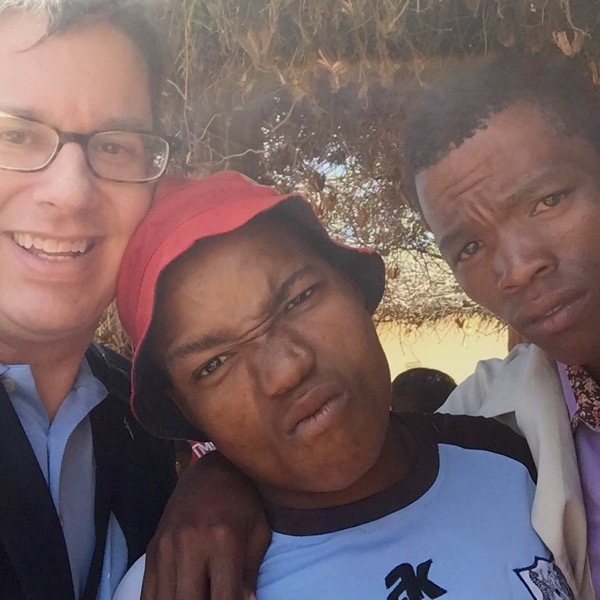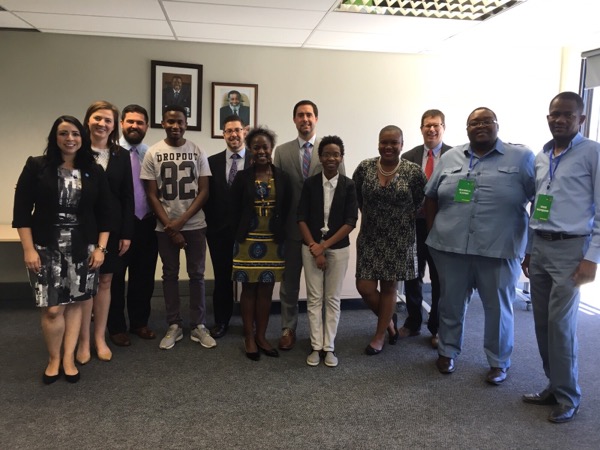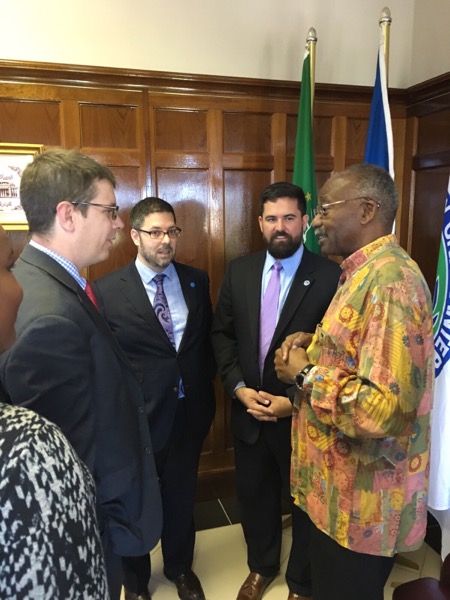Reflections on Botswana
 Monday, November 9, 2015 at 4:14PM
Monday, November 9, 2015 at 4:14PM 


It's hard to not notice the kids. They are everywhere. Something like 60 percent of the population is under 35, but it feels like 50 percent is under 18.
Yet it is the kids here that give Botswana great hope. Every secondary school kid we met was optimistic, forward leaning & ambitious. As I told our hosts, it's easy to be optimistic about Botswana after visiting schools. But the mountain to economic opportunity for all is still steep, as our trip to Dibeke demonstrated.
On the last Saturday of the trip, we traveled two hours or so to the small village of Dibete. The road from the Capitol feels like most two lane roads in the southwestern USA, endless miles through desert and scrub brush, before turning off the road and walking into a place seemingly stuck between the modern and traditional world.
This was the visit we spent eight days waiting for. We had come for a traditional Kgolta, essentially a town meeting convened by the tribal Chief. Typically Kgolta's dealt with local community issues, airings of grievances or even criminal justice issues, but on this day they came together simply for our visit. It felt like the whole village showed up for our official visit. I'm sure for most, it was the pure novelty of their guess - surely for 99% of Dibeke residents & children, we were so different that we might as well have been from Saturn.
The scene upon arrival was jarring. The heat & the poverty hit you immediately. There's no grass, and the only pavement is building where the Kgolta is held - that and a 20 spot parking lot that the government had built for some inexplicable reason. The parking lot was so useless the village fenced it off.
And then there are the kids. Everywhere.
The villagers here lived up to the Batswana tradition of friendliness, and for the three-plus hours we were there, in spite of their lacking, they cooked us food, provided us water & performed for us.
A local politician heard about the gathering, stopped by and gave a nice speech, but it's clear that other than glad-handing, government services - other that the parking lot - are mostly nonexistent. They are on their own. You feel driving around that by and large, the Botswana government is failing the people.
But it's the kids that day who I think we will all remember. Universally well behaved - imagine most 5 year olds you know sitting through a 2 hour meeting in 100 degree weather - they were happy and curious. Many just wanted to touch us, and it was clear from people wanting to feel our hair and touch our skin, that not many white people had ever been there.
One woman reminded me of a lady I met in the Philippines, who similarly asked me to come close to the child in her arms, so the kid could touch me, as if somehow that brought good luck. Others ran away. It's experiences like this that drive home the true blessing that is American birthright.
There is a real path forward for these kids. One thing the government has done well is making education compulsory & students here have access to school. The schools we saw were taught by competent teachers. Diamond royalties make college free for all, so those kids have a real shot of breaking the poverty cycle, if the economy can generate enough jobs. That's the big IF.
But back to the village, kids here travel a mile or two to school, but when they come home, there is no library or other place to study. And the one room homes many call home aren't conducive to homework, nor is the 100 degree heat. In face, the town doesn't even have a computer or a printer. People asked for my card, but had no idea what email was. They left us with a laundry list of polite requests for help.
But their lacking of things hardly means they lack for talent. Most people were at least functionally bilingual - particularly the kids, and the drama troupe that performed for us had kids that could make a living in the US in the arts. Ask any kid what they want to be, and the most typical response is some kind of scientist.
Later in the day we headed to Stepping Stones, a bilingual school that prepares kids from all walks of life to learn in the US. We held a mock political debate with them, and again, were amazed by their skills. One student living in that rural community who I particularly bonded with - see selfie above -told me he aspired to be a scientist after at studying Yale. I wanted to take him home.
So many of the kids we met would be on a trajectory for great success if they lived almost anywhere else. But simply working hard here is not a recipe for guaranteed success. It's just not that easy. There are major structural problems with the government, which many fear could fall apart if the current President refuses to leave office at end of his term. It's hot here, and the drought is draining the country, quite literally. An economy that is entirely dependent on mining and tourism has led to a nation where unemployment and inequality are way too high. One study showed 30 percent of Batswana went without sufficient food in the last year. Traffic laws are seen as suggestions, not laws. The place, as I told a friend, feels raw.
That being said, in someways unlike Namibia, there is a real sense of nation here. Even though tribal affiliations are rightfully important, being Batswana means something. You see the flag everywhere.
And there is evidence of change. We saw a younger generation of emerging to break the one party strangle on government, while other young leaders inside the ruling party are working to reform that institution. We met a pair of opposition leaders, one a graduate of Harvard, the other from Wharton, who have teamed up to mount the first significant threat to the ruling party since independence. And like Namibia, NGOs, like our wonderful hosts at the Organization of Youth and Elections in Botswana (OYEBO) are being stood up by locals to address areas where government has fallen short.
There isn't a ton of time. Over the next decade, roughly a million Batswana will join the workforce, arguably better educated & prepared than any before them. The economy is no where near ready for that. Tourism is a real hope, but it's going to take more than that alone, particularly if the diamond mines, as some fear, start to run dry.
That being said, it's a place really worth rooting for. As one of my colleagues on the trip said, Botswana is the great underdog story. The people here are proud, friendly and welcoming. Even the immigration officer at the airport as we left asked why we were leaving so soon and when we're we coming back. I think we all left there truly wanting to see them succeed and trying to figure out what more we could do - particularly for those kids.
As I told many and wrote here, coming to Africa for me has been a 30 year dream in the making, and I understand today better than ever how and why people who come here just want to come back. I'm truly grateful for the American Council of Young Political Leaders for the honor of escorting this trip, the first such trip for the organization to Botswana, for the friendships made within the delegation and in Namibia and Botswana, but mostly for the chance to live out a dream.
 steve |
steve |  Post a Comment |
Post a Comment | 







